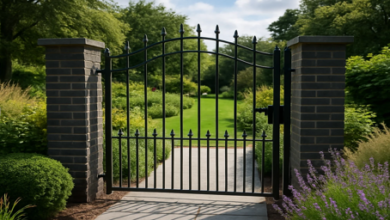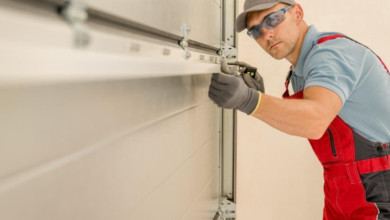Painting wall: The best paint types and techniques for long lasting results

A durable, elegant finish isn’t luck; it’s the product of sound choices and steady technique. At Nourklusbedrijf, we treat every muur schilderen project as a small system substrate, primer, topcoat, tools, and timing so the surface stays beautiful long after the rollers are cleaned. Your first decision shapes the rest. For interior painting wall projects, high quality acrylic (latex) paints are the modern standard: they dry fast, resist yellowing, and keep odour low. If you need the smoother leveling of traditional oil with easier cleanup, consider water borne alkyd hybrids excellent for trim and doors that frame a painting wall but still compatible with low VOC goals. Mineral (silicate) systems earn their keep on mineral substrates like lime plaster and concrete; they chemically bond and breathe, reducing blistering in slightly damp spaces. Sheen also matters. Matte hides small defects but scuffs more easily; eggshell balances warmth and washability; satin adds toughness and subtle light; semi-gloss is usually best kept for woodwork rather than large painting wall fields.
Prep is where longevity is won
Great application can’t rescue poor preparation. Clean the surface with a mild degreaser anywhere hands, cooking vapours, or dust collect. Fill hairlines with a flexible filler, then sand to a uniform tooth 220 grit is a safe, forgiving choice for most painting wall scenarios. After sanding, vacuum and tack the surface so dust doesn’t weaken adhesion or telegraph as bumps. If you’re facing glossy or unknown coatings, a thorough scuff plus an adhesion primer prevents peeling. For water stains or nicotine bleed, use a dedicated stain blocker; it spares your final film from surprises.
Prime for uniform colour and fewer coats
Primer isn’t “extra paint.” It evens absorption and seals patchy filler so the topcoat lies flat and colours match from corner to corner. Fresh drywall or plaster needs a drywall sealer to stop flashing those dull, patch coloured halos that can haunt a painting wall in raking light. Counter intuitively, priming often reduces total work because you reach opacity faster and keep the decorative film within its ideal thickness.
Application that looks professional in daylight
A repeatable sequence beats heroics. Cut a clean line around the perimeter, then roll in controlled sections while the film is still wet so edges knit invisibly. Load the roller evenly, work in overlapping passes, and finish each pane with a light, single direction lay off to align texture. This rhythm keeps a painting wall free of laps and dark “picture frames” around edges when the sun finds the surface later.

Tools that make your skills look better
Good tools cost less than an extra coat. A shed resistant microfiber roller (8-10 mm nap for typical interiors) delivers smooth coverage with minimal stipple, while a quality 2-inch angled brush sets sharp lines without dragging. Extendable poles improve reach and posture especially useful on tall painting wall areas where wobbly ladders invite mistakes. If a can has been opened before, strain the paint; dried flecks can cut visible tracks into a fresh film. Coordinate with other trades to avoid rework Sequence saves money. Paint ceilings first, then walls, then woodwork. If you’re installing flooring, complete the painting wall work beforehand and protect skirtings with clean tape and drop cloths; fresh coatings and dust producing saws don’t mix. Where electricians or carpenters follow, leave marked anchor points and snap a photo for exact refit after curing fewer holes, fewer touch ups.
See also: 5 Landscaping Hacks That Save Homeowners Money
One practical checklist (print and keep)
- Confirm the substrate and choose a compatible primer; stain block if needed.
- Sand for uniform tooth; vacuum and tack thoroughly before you open a can.
- Sample colours on the actual painting wall and judge them in morning, afternoon, and evening light.
- Choose a sheen that matches traffic and cleaning expectations (washable options for busy rooms).
- Calculate paint realistically: two full coats per painting wall plus ~10 % overage.
- Maintain a wet edge and finish sections with a light, one direction lay off; respect recoat and cure times.
When to call Nourklusbedrijf
DIY is satisfying until it isn’t. Persistent stains, moisture ingress, hairline cracks that reopen, or large colour transitions across a single painting wall are signs it’s time for professionals. Our team handles substrate diagnosis, stain isolation, precision cutting on complex angles, and high coverage systems that reduce future maintenance. We also stage rooms so you can keep living or working between coats protecting your schedule as carefully as your floors.
Bottom line
A long-lasting finish comes from the right paint, disciplined prep, and calm technique. Treat every painting wall as a chain where each link matters; neglect one and the whole system weakens. Choose materials suited to the room, prime with purpose, work wet to wet, and give the film time to cure. Do that, and a year from now your painting wall will still look newly done no streaks, no scuffs, just quiet, even colour that makes the whole space feel intentional. When you want predictable quality without guesswork, Nourklusbedrijf is ready to plan, paint, and deliver a surface you’ll be proud to live with.
Discover how Nourklusbedrijf can support you with tailor made solutions.



